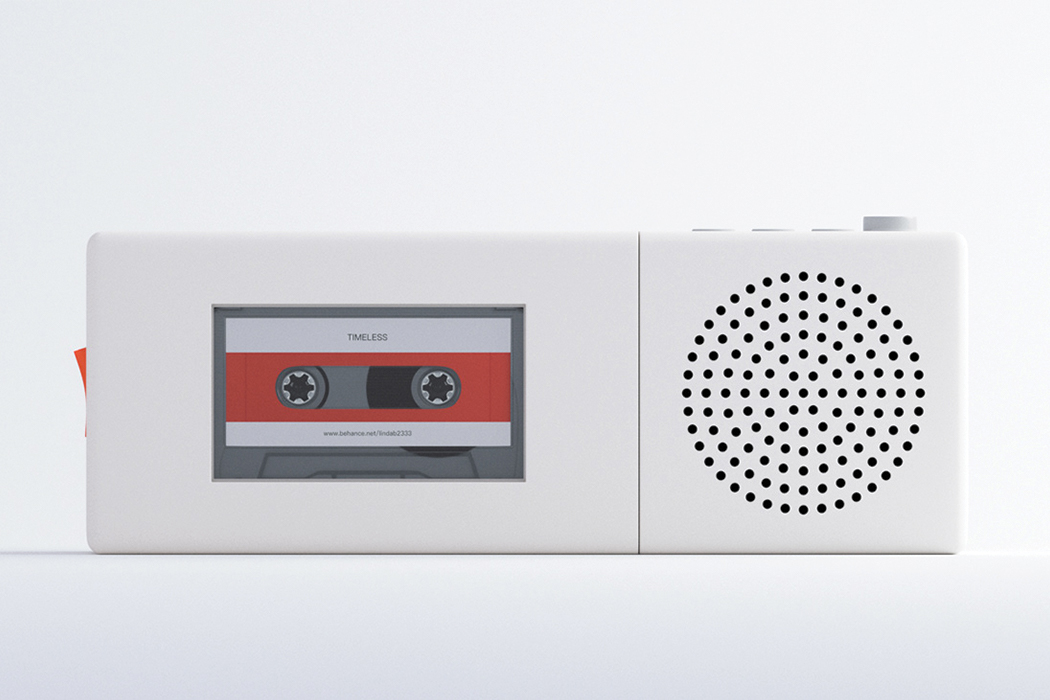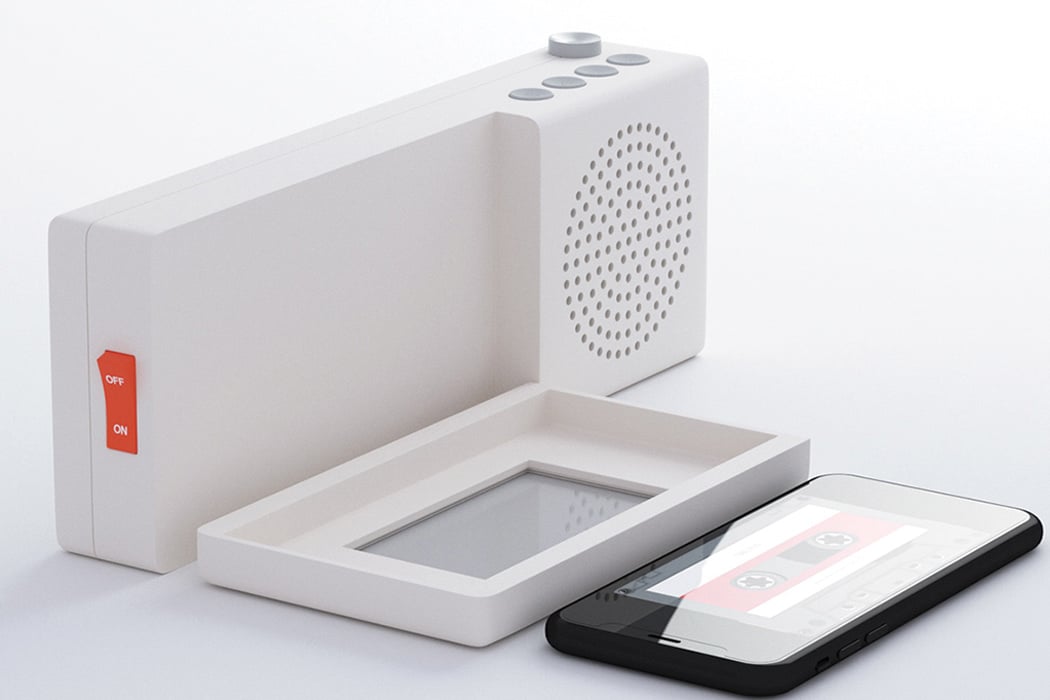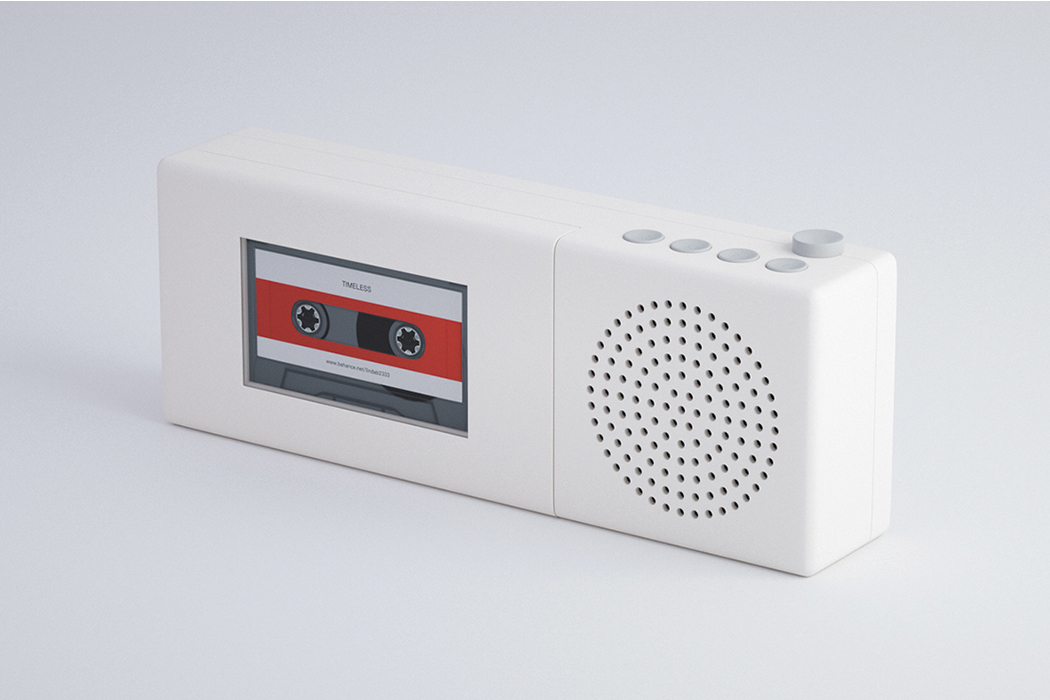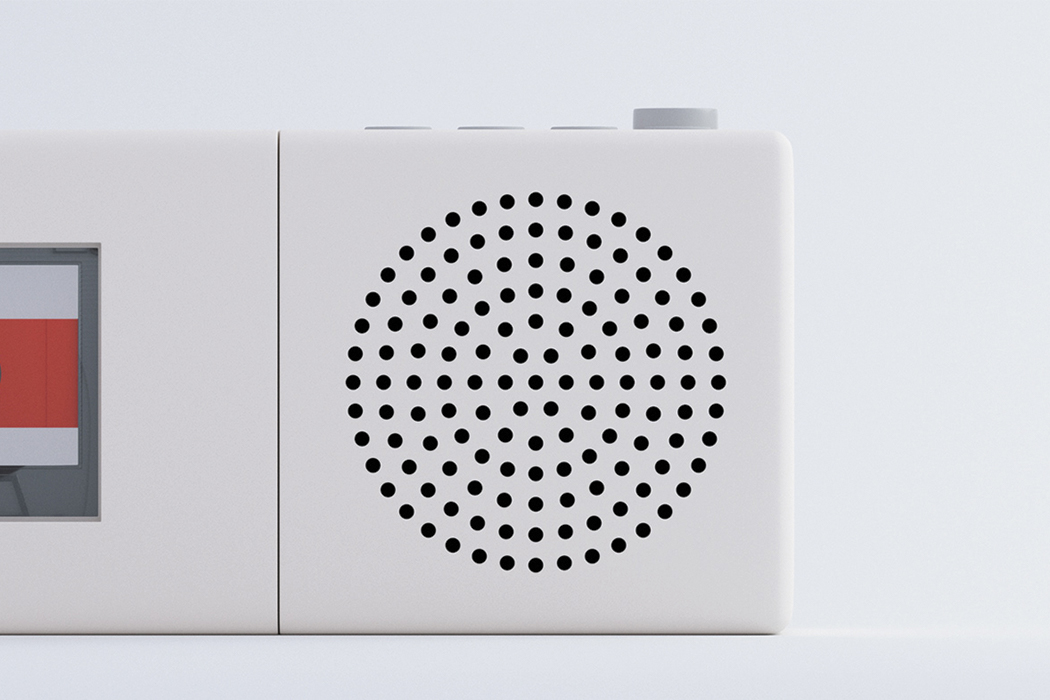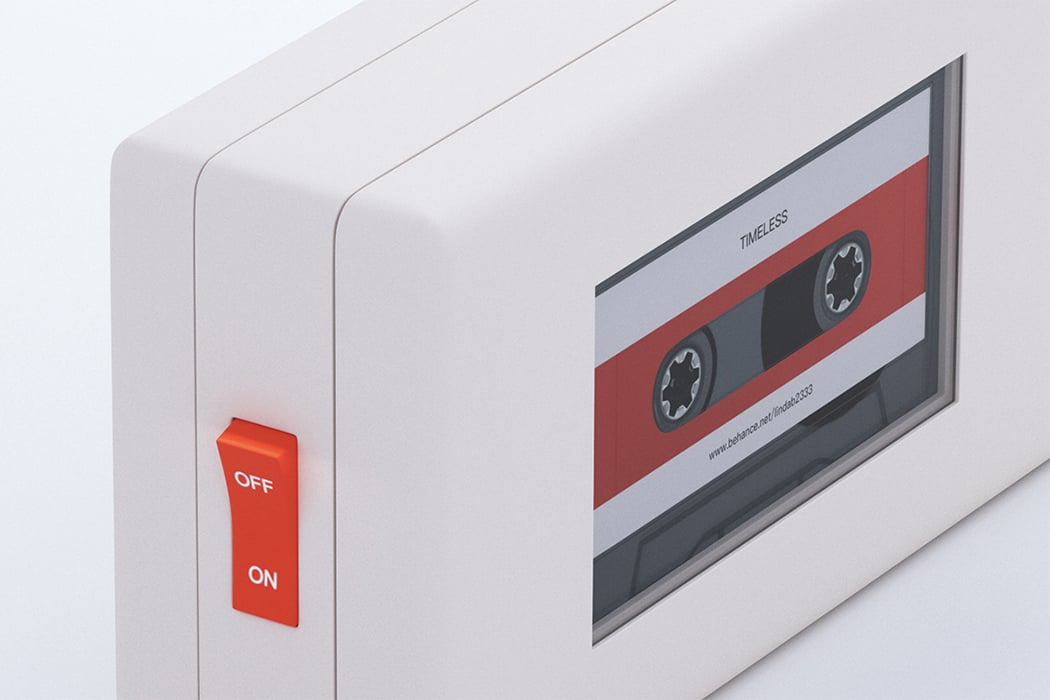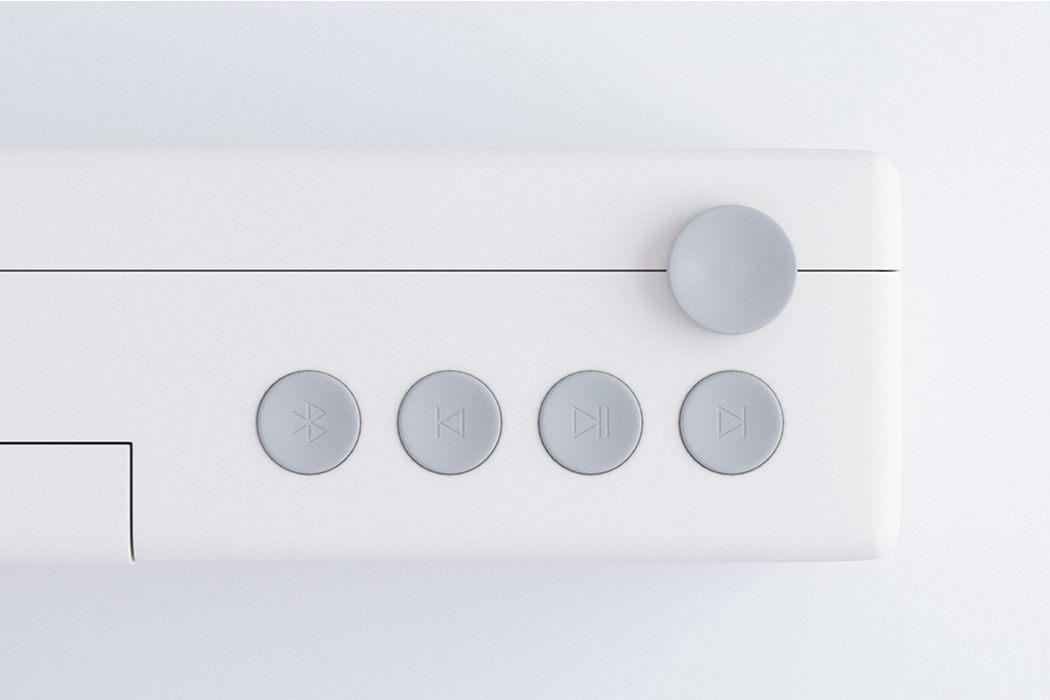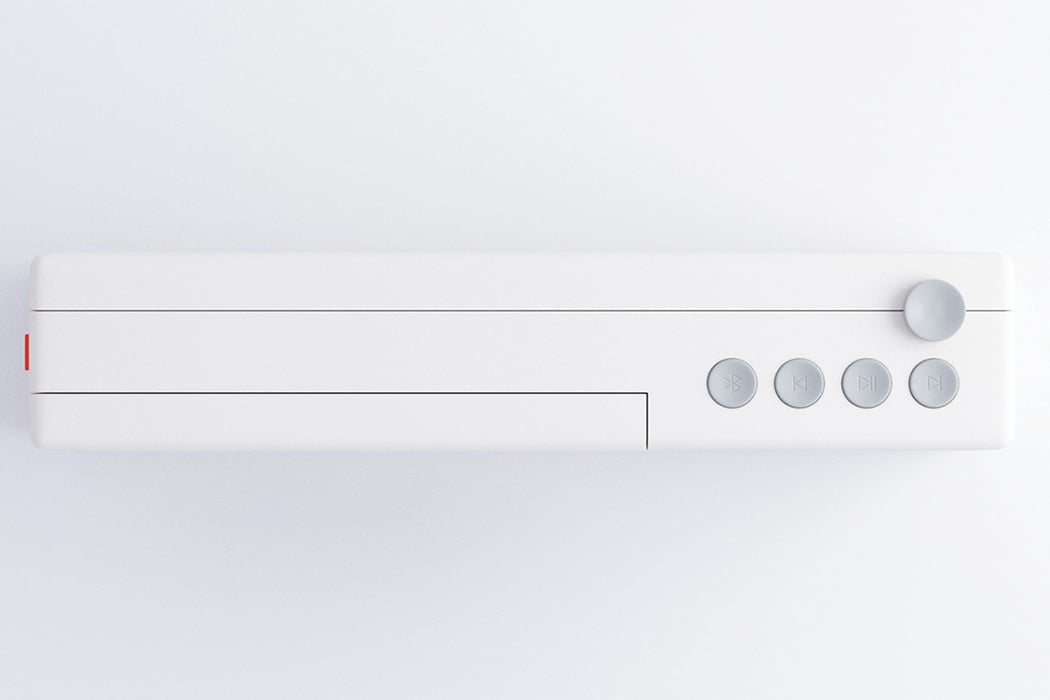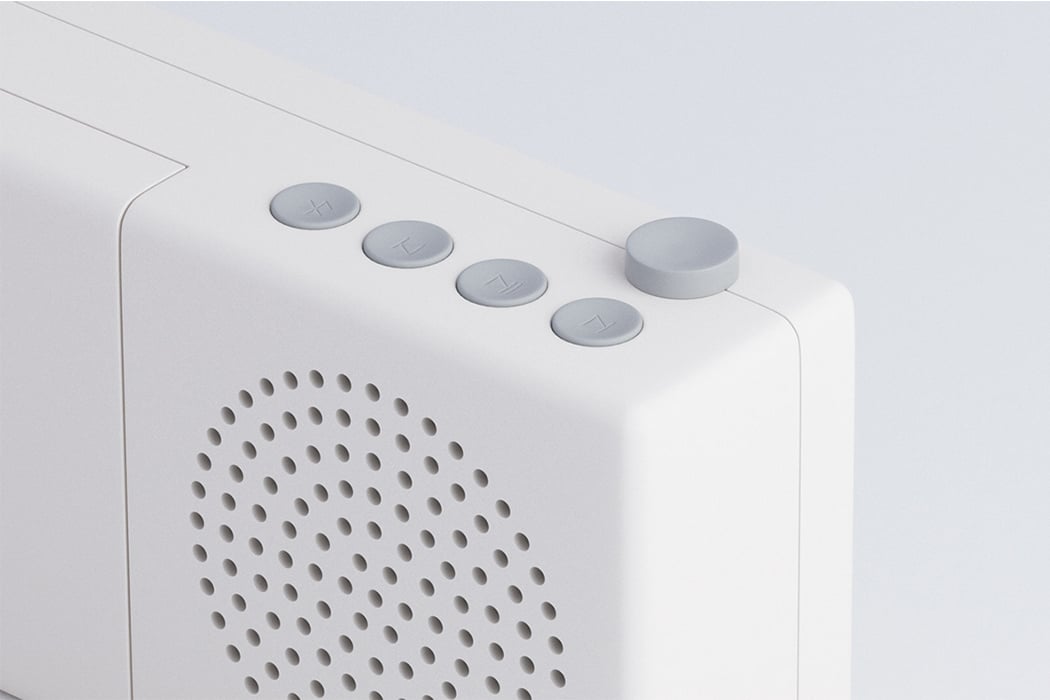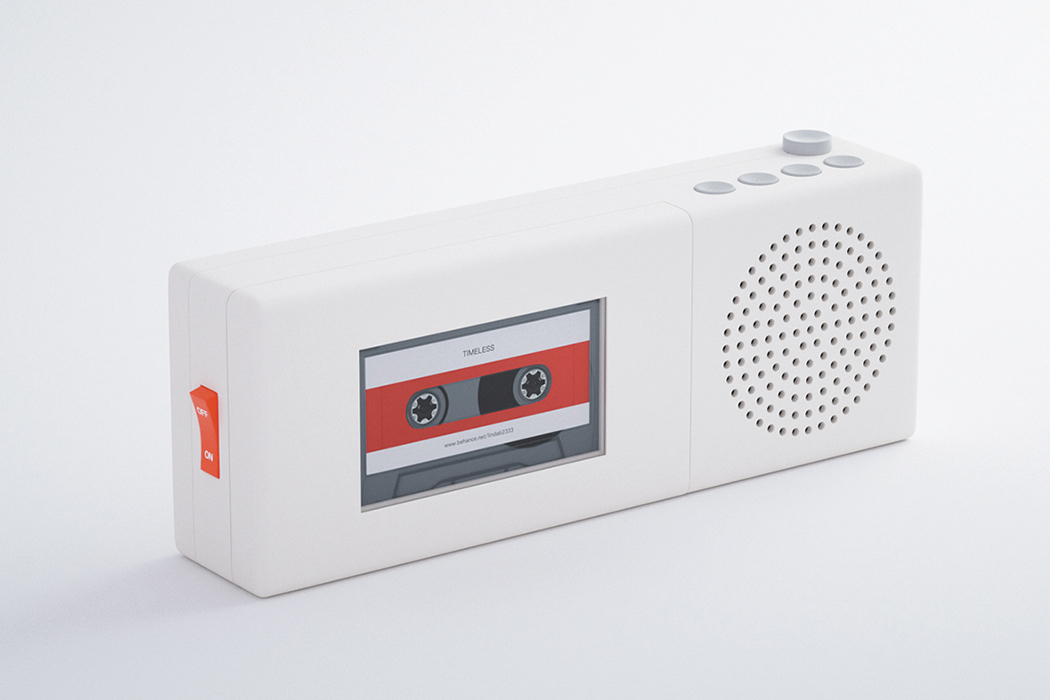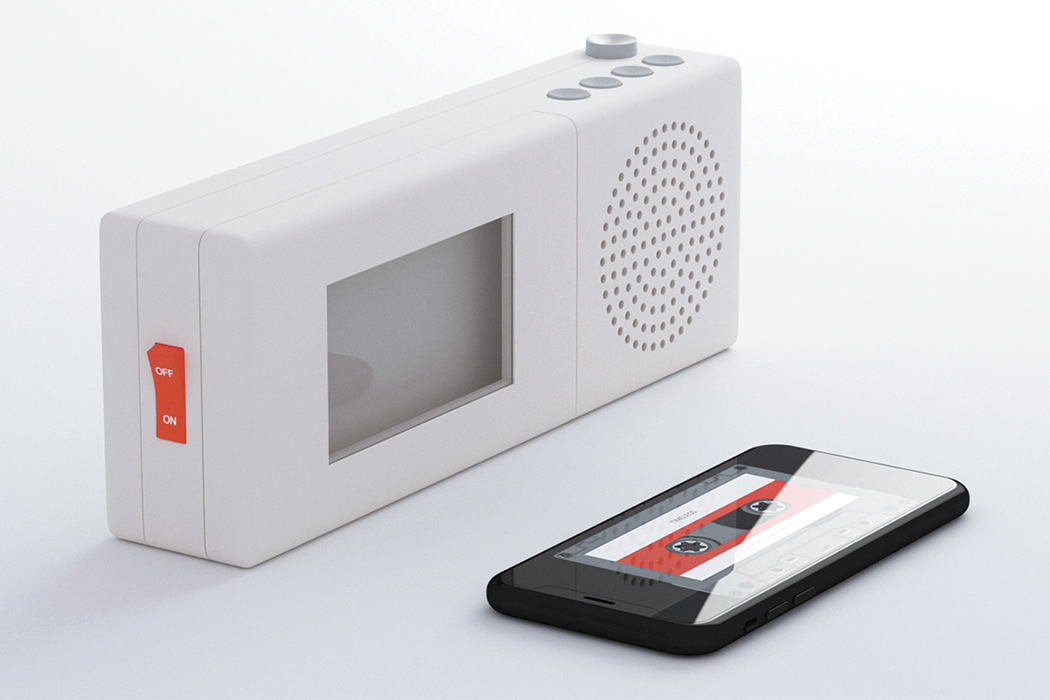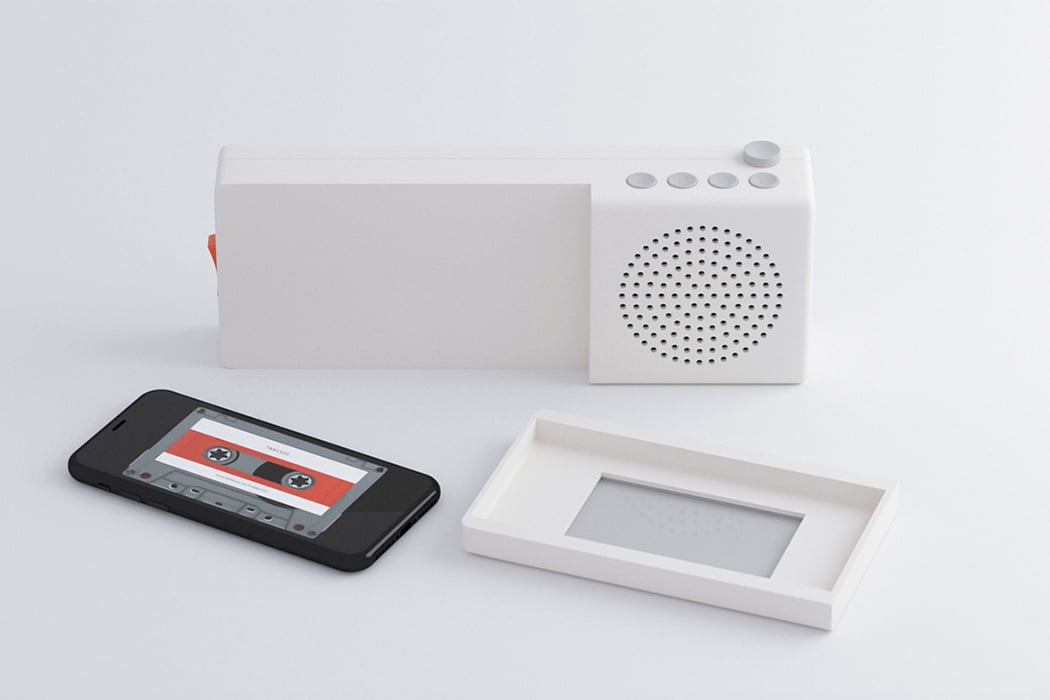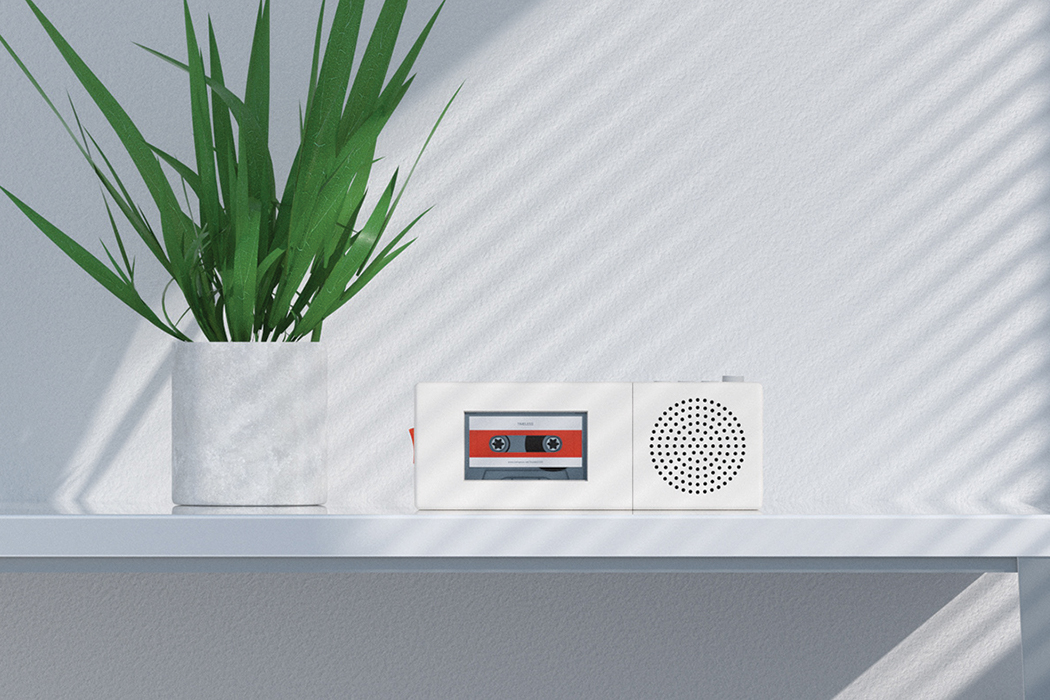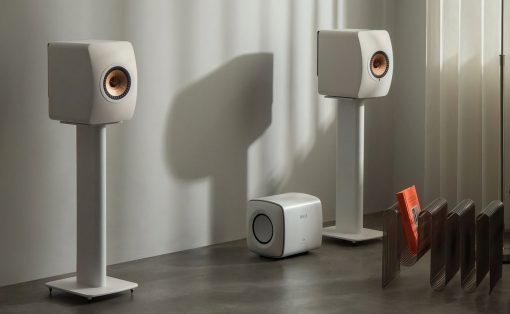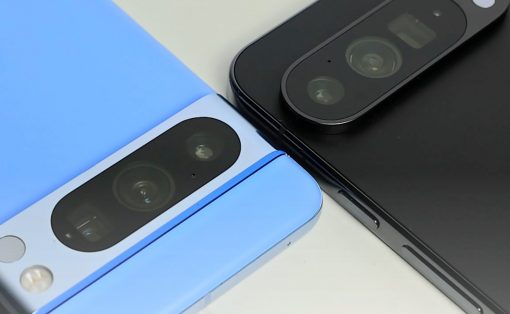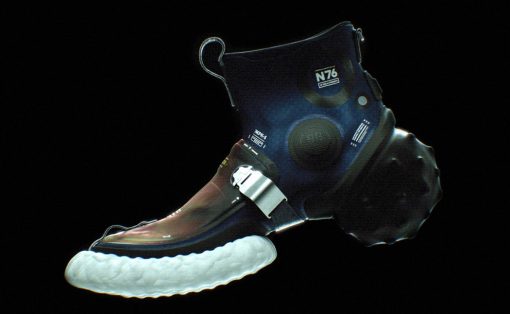
Music is sometimes the only company you need, whether you’re listening to your favorite artist with your ears perked up beside the speaker or letting jazz fill in the background while you work. With quarantine, however, it can sometimes feel difficult to just let listening to music be an activity in and of itself. The list of distractions and temptations is literally endless – the timeline never runs dry. Instagram’s feed is ever-changing and endlessly refreshable, as another text message rings and more unread emails pile up, and Twitter has the latest and most accessible updates out there. But this new Dieter Rams-inspired Bluetooth speaker design encourages you to click the lock button and stow the phone away if only for a song.
The design’s concept is visually approachable and inviting, with a single speaker on the product design’s right-hand side, a roomier pocket for your phone on the left, and self-explanatory player controls on top. While the visual and compartmental design makes the music device easily portable, it also motivates you to end the constant scrolling and just enjoy the music. Since the speaker works with Bluetooth, the space to stow away your phone is more of a light suggestion than a prerequisite for operation. However, if you do decide to use the suggested space for your phone, the product’s design becomes user-adjustable. Since the speaker’s screen, which encases your phone, is transparent, that means you can transform your screen into a compact cassette or any other background, invoking your favorite musical memory within any room.
It’s admittedly hard to put the phone down when you’re spending a lot of time in the same space every day – the timeline isn’t the only thing that could use some refreshing. If anything, quarantine has awakened many of us to the relief that design can provide by reigniting in us simpler, warmer energy from yesteryear. Inspired by Dieter Rams’ widely-celebrated TP-1 transistor radio and phonograph, this new speaker design offers exactly that. The elemental structure and visually friendly presentation echo the early years of sound recording, back when listening to music was more coveted and less instantly gratified.
Designers: Linda B
